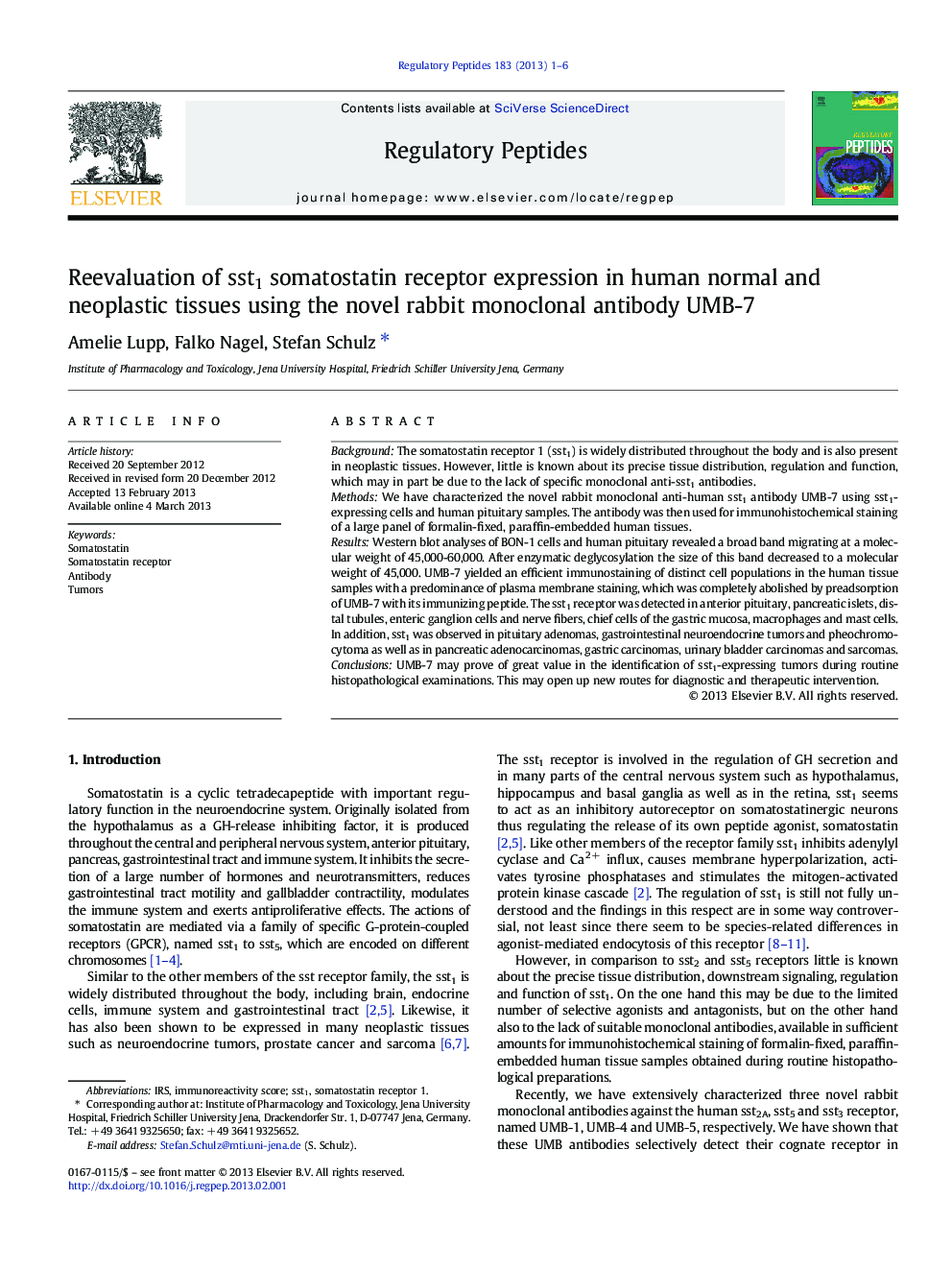| Article ID | Journal | Published Year | Pages | File Type |
|---|---|---|---|---|
| 2022437 | Regulatory Peptides | 2013 | 6 Pages |
â¢UMB-7, a new monoclonal antibody against the human sst1 somatostatin receptorâ¢Excellently suited for immunoblotting experimentsâ¢Enables staining of the sst1 in human formalin-fixed, paraffin-embedded tissuesâ¢Excellently suited for routine histopathological examinationsâ¢First anti-sst1 antibody yielding a predominance of plasma membrane staining
BackgroundThe somatostatin receptor 1 (sst1) is widely distributed throughout the body and is also present in neoplastic tissues. However, little is known about its precise tissue distribution, regulation and function, which may in part be due to the lack of specific monoclonal anti-sst1 antibodies.MethodsWe have characterized the novel rabbit monoclonal anti-human sst1 antibody UMB-7 using sst1-expressing cells and human pituitary samples. The antibody was then used for immunohistochemical staining of a large panel of formalin-fixed, paraffin-embedded human tissues.ResultsWestern blot analyses of BON-1 cells and human pituitary revealed a broad band migrating at a molecular weight of 45,000-60,000. After enzymatic deglycosylation the size of this band decreased to a molecular weight of 45,000. UMB-7 yielded an efficient immunostaining of distinct cell populations in the human tissue samples with a predominance of plasma membrane staining, which was completely abolished by preadsorption of UMB-7 with its immunizing peptide. The sst1 receptor was detected in anterior pituitary, pancreatic islets, distal tubules, enteric ganglion cells and nerve fibers, chief cells of the gastric mucosa, macrophages and mast cells. In addition, sst1 was observed in pituitary adenomas, gastrointestinal neuroendocrine tumors and pheochromocytoma as well as in pancreatic adenocarcinomas, gastric carcinomas, urinary bladder carcinomas and sarcomas.ConclusionsUMB-7 may prove of great value in the identification of sst1-expressing tumors during routine histopathological examinations. This may open up new routes for diagnostic and therapeutic intervention.
